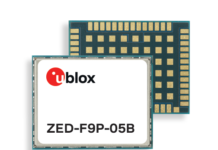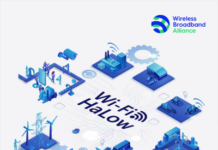
QUIC has grown at an alarming rate and continues to unease telecom operators. It has made tremendous strides since its inception and now affects almost every facet of life, especially mobile communications. Google introduced QUIC, an encryption-based protocol to reduce TCP connection and transport latencies. Today, around 75% of the traffic is encrypted in mobile data networks. TCP, in combination with TLS, requires three round trips before the actual data can be sent. QUIC, on the other hand, minimizes the number of setup round trips by combining UDP transport and its own cryptographic handshake. For connections to the same origin server, QUIC facilitates a zero round trip time.
By the end of 2021, more than 75% of Meta’s (Facebook) internet traffic used mvfst. That is an experience-focused implementation from Meta of standardized IETF QUIC. mvfst has shown significant improvements in several metrics. As per Meta, users experienced 6% reduction in request errors, 20% tail latency reduction, and 5% reduction in response header size relative to HTTP/2. This also had a cascading effect on other metrics, indicating that people’s experiences were greatly enhanced. The overall error count on video requests was reduced by 8%. The rate of video stalls was reduced by 20%. mvfst improved the video viewing experience, with an outsized impact on networks with relatively poorer conditions, especially those in emerging markets. Meta deployed mvfst on Instagram for iOS and Android. Apple has also embraced IETF QUIC.
Microsoft developed its own version and called it MsQUIC. Microsoft has been using MsQUIC to carry its Server Message Block (SMB) traffic and debated that SMB over QUIC is the future of distributed systems as it enables use cases in edge computing and mobile devices — not possible to achieve over TCP. Another example of QUIC going mainstream is its use as a 5G signaling protocol (3GPP 29.893). 5G service architectures are examining and identifying gaps and improvements.
The QUIC effect and what mobile operators can do:
QUIC is an enigma for mobile operators, both from data monetization and subscriber Quality of Experience (QoE) perspective. As an encryption-based protocol, traffic is not visible at all to the mobile operator and they cannot use traditional traffic management tools to control the cost to deliver the content, manage subscriber QoE and ultimately monetize data. This is particularly alarming when it comes to video content. According to MVI data, video accounts for approximately 70% of the total mobile internet traffic. Video represents 75% of the total QUIC traffic.
To manage incursions on their networks mobile operators can review their mobile data management strategy to identify and differentiate current and future traffic streams, such as QUIC, mvfst and MsQUIC.
Mobile operators can combine transport layer optimization, encrypted traffic classification techniques and real-time RAN utilization. This provides a range of selective traffic management options for QUIC. These include content and user activity differentiation to create hand-crafted mobile data plans as well as QoE management that helps reduce congestion and the burden on the RAN.
QUIC and subscriber QoE
QUIC promises to decrease the wait time for web search results by 8% on PCs and by 4% on phones. Similarly, QUIC also appears to lessen the buffering time for YouTube by 18% on PCs and 15% on mobile devices.
QUIC is here to stay; however, few mobile operators still do not permit QUIC to be used and would actively block it, as it would bypass other internal solutions for traffic capacity monitoring and management. Moreover, mobile subscribers do not have info about QUIC or any other protocols. They just assume that this speed means their mobile operator has a faster network, making them less likely to churn. Further on standardization, QUIC has been approved by the Internet Engineering Taskforce (IETF) to a certified standard — RFC 9000.
The way forward
We have witnessed how these solutions are used to deliver the same amount of QUIC video with 20% less data. As a result, mobile operators can achieve reductions in the number of congested cells by 15%, facilitating fairness in the distribution of video bitrates (and therefore video quality) across subscribers sharing physical network resources.
Content providers will continue to innovate proprietary protocols, driven by video and will use their commercial might to get these adopted and then seek approvals from standards bodies. In order to maintain visibility of traffic and relevance in the user experience, operators must have solutions for managing and optimizing UDP/QUIC.
By the end of 2022, approximately 95% of internet traffic could be encrypted and QUIC will be almost 47% of global internet traffic. It is important to see how mobile operators take control of their network and their subscribers QoE.


















